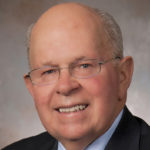Psychotherapy Bulletin
Psychotherapy Bulletin

Five years ago, at the 2016 State Leadership Conference, Expanding the Practice Spectrum, Governor Ted Strickland was the APAPO-PAC Honoree, and if I recall correctly, Representative Tim Murphy also attended. Katherine Nordal, Executive Director for Professional Practice, enthusiastically welcomed the attendees to the 33rd annual conference: “It’s been quite a year for APA. I know how troubling and painful these past eight months have been for you as members, psychologists, and SPTA leaders. The Independent Review sent shockwaves through APA and the psychology community at large. It will certainly take time for healing. But I do believe that the association is moving in the right direction. A newly appointed ethics commission will be examining and making recommendations about ethics policies and procedures in APA.
“Over the years, State Leadership Conference has become a wonderful melting pot of psychologists representing several generations, various work settings and cultural and ethnic backgrounds. This year over 30 percent of SLC attendees are Early Career Psychologists. A number of folks in this room got their start at SLC as a Diversity Delegate. June Ching, the current vice-chair of CAPP, was a Diversity Delegate; Zoe Proctor-Weber, President of the Florida Psychological Association, is a past SLC Early Career Delegate.
“Just this Thursday, our physician definition bill was introduced in the US Senate by Susan Collins from Maine and Sherrod Brown from Ohio. This legislation will add psychologists to the Medicare definition of ‘physician,’ thereby allowing us to practice to the full extent of our licensure in the Medicare program free of unnecessary physician supervision. Psychologists are the only doctorally trained health care professionals in the Medicare program who are not included in the physician definition, which does include chiropractors, podiatrists, optometrists, and dentists. We’re also supporting the ‘Mental Health Awareness and Improvement Act of 2015’ introduced in the Senate by Lamar Alexander (TN) and Patty Murray (WA). This legislation focuses on suicide prevention, mental health care for children and older adults, and the integration of mental and physical health care.
“This year, there has been a lot of hype around the Presidential election. But there’s another election that we really need to pay attention to. One of our very own, Ted Strickland, is running for the United States Senate! We need all of you to continue to demonstrate the real value of psychology as a health profession. One of our keynote speakers is Arthur Evans, the Commissioner of the Philadelphia Department of Behavioral Health and Intellectual Disability Services. He’ll touch on the many opportunities that Medicaid expansion and related programs create for psychologists who wish to improve the health outcomes of underserved populations. We have brilliant psychologists doing brilliant things, thinking outside the box, and trying new and innovative ways to practice. I hope you will come away from this State Leadership Conference inspired to take up new professional challenges, excited about expanding the spectrum of your practice – wherever that might be – and even more committed to working to ensure a bright future for our awesome profession!”
Graduate Medical Education (GME): Bob Frank, former President of the University of New Mexico and a Robert Wood Johnson Health Policy Fellow who served with Senator Jeff Bingaman: “Most Americans know it is very expensive to train physicians and they are aware that many physicians leave medical school with significant personal debt. A survey in 2019 found that 78 percent of medical students graduated with the median debt of $200,000. In 2020, those graduating from public institutions reported $255,517 debt, while those graduating from private institutions reported $337,583 debt. What is not well known is the American taxpayers contribute significantly to the cost of training physicians after they leave medical school and enter the specialty program for their ‘residency.’ Indeed, the passage of Medicare in 1965 led to the creation of support for new physicians until the ‘community undertakes to bear such educational costs in some other way.’ This funding was provided through cost-based reimbursement based on the hospital’s expenses. The hospital was eligible to cover residents’ stipends, faculties salaries, and other educational expenses with no limits. The program supporting resident physicians is called the Graduate Medical Education program (GME).
“Since its modest inception in 1965, GME has grown substantially. A report from the Institute of Medicine in 2014 said the GME annual cost was more than $15 billion. Accompanying this substantial growth in funding has been the creation of a formidable set of rules and regulations overseeing the program. From 1965 until the implementation of the Medicare Prospective Payment System (PPS) in 1983, GME was based on hospital costs. The advent of the PPS led to two separate GME funding systems in teaching hospitals: 1. Direct Graduate Medical Education (DGME) covering direct costs of residency training (i.e., resident and teaching faculty salaries, and some administrative and overhead costs); and 2. Indirect Medical Education (IME) is funding an adjunct to hospital PPS inpatient rates to defray costs of providing patient care using residency programs. Medicare DGME and IME funds are distributed to acute hospitals through a set of strict formulas. DGME is based on the three-year rolling average of the hospital’s weighted number of full-time equivalent residents over the most recent three-year period. The second variable in the calculation of DGME is the per resident amount (PRA). The PRA is calculated by dividing the hospital’s base year (either 1984 or 1985) DGME costs by the weighted resident count after it is adjusted for geographic differences and inflation. The last factor in DGME is the Medicare day ratio which is a measure of the hospital’s inpatient Medicare days to total inpatient days. It is clear from these variables that GME was not intended to cover all resident education costs but rather those related to Medicare patients.
“Until the passage of the Balanced Budget Act (BBA) of 1997, Medicare did not limit the number of residents each hospital could claim for reimbursement. With no limits, hospitals added residencies because each new program created additional PRA and IME revenues. The BBA capped the number of residency slots supported by Medicare. The cap was established by the number of resident slots each hospital had on December 31, 1996. This cap did more than limit the number of new residents; it also froze the distribution of residency slots. In 1996, residency slots were skewed toward Northeastern states, a bias that has continued over the intervening period. In addition, the limitation on the number of residency slots also makes it less likely any new professions would be included in GME. Thus, the BBA ensured that GME would include physicians, dentists, and podiatrists.
“Psychologists quickly realized the advantage of being eligible for GME funding, but inclusion in the program proved extremely challenging. In 1996, the University of Florida, where I served as Dean of the College of Public Health and Health Professions, added the inclusion of psychology in GME to its federal legislative agenda. Our federal lobbyists spoke with members of the Florida Congressional delegation about the importance of GME inclusion for psychologists. The university requested APA participate in discussions with the Centers for Medicare and Medicaid (CMS) (then called the Health Care Financing Administration [HCFA]) about the inclusion of psychologists. This led to APA joining up with the university.
“These efforts led to then-Representative Karen Thurmond inserting language in 1997 in the Conference Report of the BBA that encouraged HCFA to include psychologists and physician assistants in GME (P.L. 105-217). Not satisfied with this incremental step, in October, she, along with Representative Pete Stark of California, introduced H.R. 2640 with language that directed HCFA to include payments to hospitals to fund $10 million for educational activities of psychologists. Unfortunately, the bill died at the end of the 105th Congress. The following year the Florida delegation asked the Secretary of Health and Human Services (DHHS) to direct HCFA to respond to the BBA language. Florida’s Senators Graham and Mack requested the Senate appropriations subcommittee urge HCFA to act on the BBA language.
“One of the challenges facing psychology in obtaining GME funds is the fact that the money is passed through hospitals to training programs. In 1998, an APA survey found that 62% of the programs responding were located in hospitals, thereby meeting the HCFA GME standard. In 2000, Senators Mack and Graham spoke on the Senate floor and again urged DSSH to immediately issue a notice of rulemaking announcing the intention to include clinical psychologists in GME. The Clinton Administration responded to these efforts by arranging a meeting with APA staff and myself with Robert Berenson, who oversaw Medicare Payment Policy. He suggested separating predoctoral internships, which he felt required authorization from Congress and post-doctoral training. He believed the latter was eligible under existing legislation. APA continued its efforts to get HCFA (now CMS) to issue a notice of rulemaking for the inclusion of predoctoral internships as late as 2010.
“During the Bush Administration, further discussions clarified that post-docs were eligible for reimbursement, but only through the Allied Health pass through funds. Since psychologists were not included in the Medicare ‘physician’ definition, this was the only avenue for funding. Reimbursement for post-doctoral programs would be managed by the Commission on Accreditation of Allied Health Programs. Hospitals with qualifying programs would submit requests for funding based on “reasonable cost basis” to the appropriate fiscal intermediary who determined if the program met the program requirements. Hurley Hospital, part of the Michigan State University Flint Area Medical Education program, applied for funding in 2002 and received reimbursement in 2006. Two other programs also received funding. I am not aware of any other programs that have succeeded, notwithstanding the significant financial benefits.”
9-11 Reflections: Charlie Houy, a longtime U.S. Senate colleague – “Departing from LaGuardia airport, the blades of the Army Guard helicopter wop-wopped on the gorgeous sunlit, azure sky morning. The helo doors were open. It was a little chilly but strapped in, we could lean out and catch a breathtaking view of the sprawling metropolis on the short hop to Manhattan. As we neared the site, a smoky haze rose from the ground. It was Tuesday, September 18, 2001, one week after the attack. We inhaled the acrid fumes as we circled over the rubble, surveying the damage.
“Senator Ted Stevens, the ranking Republican member of the defense appropriations subcommittee, had urged Dan Inouye, just then beginning his second stint as subcommittee chairman, to lead us to New York to survey the damage firsthand. Once on the ground, escorted by an FBI official, we balanced ourselves walking on a makeshift teetering boardwalk through the week-old mud toward the still-smoldering wreckage where we would meet up with Mayor Giuliani and Governor Pataki for a briefing.
“Coming from the opposite direction was a small group of firefighters comforting several grief-stricken young women. I didn’t know exactly who they were or why they were there but presumed they were new widows of firefighters lost trying to rescue the Twin Tower souls.
“At the site, a hundred-foot-tall charred steel skeleton with jagged edges pointed to the sky. It was surrounded by tons of steel and concrete rubble. I stared, amazed that this was all that was left. I barely listened to the briefing being provided by the mayor, governor, and other local officials. I couldn’t erase the image of the grieving women. We were in New York for but a few hours, yet long enough to sense the gravity. It looked like a war zone or the site of a mammoth earthquake. The city had a deep, dirty gash, the kind certain to leave a scar.
“Joining us when we arrived in New York was the artist, Jamie Wyeth, son of the more famous Andrew. I had no idea why Senator Stevens wanted Jamie to come with us that day. Stevens did things like that. But as it turned out, I’m very grateful he did. Six weeks after that day, I received a framed and autographed lithograph that captured Jamie’s recollection of the moment. The painting is dark, dominated by black, blues, and browns. In the center stands a pile of rubble, and on top are four New York firefighters and policemen raising an American flag mirroring the Marines on Mount Suribachi near the end of World War II. It is a moving piece, one that I treasure and reflect upon often, never forgetting the widows.
“The world changed fundamentally for all Americans on September 11, 2001, but none more so than for those involved in national security. On 8:40 on that Tuesday morning a week earlier, I received an email from a friend saying a plane just flew into the World Trade Towers in New York. I turned on CNN, wondering what had gone wrong with air traffic control or the pilot that would have caused such an accident. Watching the aftermath of the apparent accident, like millions throughout the world, I saw the second plane fly into the next tower. I thought it was just a replay of the first aircraft. When they clarified that it was a second plane, it was clear something was tragically wrong.
“By 10 AM, it was indisputable. The Pentagon had been attacked. It wasn’t just the World Trade Towers. Washington was upended. Rumors magnified the confusion. Bombs were reported on the mall, in the White House, and at the State Department. The Capitol, White House, and the Senate office buildings were evacuated. The city was a mess. Roads were gridlocked. Cell phone worked sporadically, if at all. I sat outside on a park bench with a couple of other staffers and watched the chaos. I decided that it would make no sense to try and drive through cross-town traffic. So, after chatting for a while, I made my way over to a nearby restaurant for lunch. I spent the afternoon there waiting for the congestion to lift.
“On September 12th, I joined Chairman Inouye and Senator Stevens on a visit to the Pentagon to view the damage. It seemed minor. Yes, there was a gaping hole in the side of the building, but things appeared under control. We received an on-site briefing on the rescue/clean-up efforts. We were not allowed to get too close. The visit was brief.
“We were now at war with a new enemy. It was an enemy we knew but hadn’t really feared. Americans had lived in a bubble. America wasn’t the Middle East. The paucity of terrorist attacks on our soil, except for Oklahoma City, left us feeling safe at home. Our bubble had now burst.
“In the aftermath, Congress gave the Executive Branch broad authority to prosecute a war on terror. After 9-11, the pace in Congress changed. Defense budgeting became a year-round process. Congress had provided the Administration with incredible flexibility and leeway, but the review and analysis that came with wartime funding altered the day-to-day work of the Committee. A renewed emphasis on intelligence increased the daily Committee staff workload. Reviewing defense budgets had always been a serious endeavor. Now it felt more urgent. And, for the first time in my career, I was actually in charge of the defense subcommittee staff.” “These are the days of miracle and wonder” (The Boy in the Bubble, Paul Simon). Aloha,
Pat DeLeon, former APA President – Division 29
Cite This Article
DeLeon, P. (2021). “These are the days of lazers in the jungle.” Psychotherapy Bulletin, 56(4), 25-29.





0 Comments